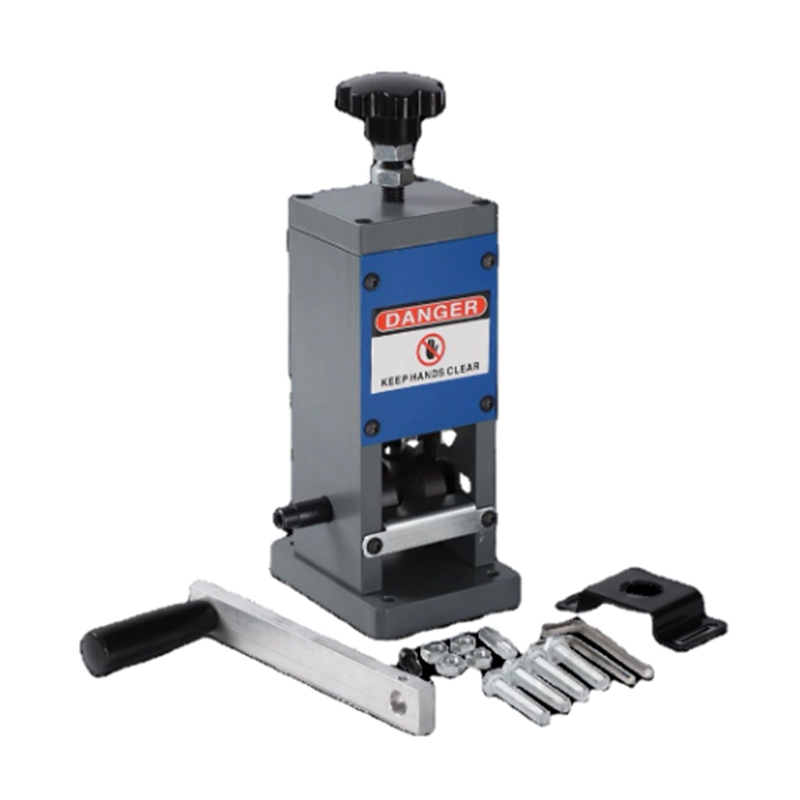The Importance of Safety Features in Hand Stripping Machines
In various industries such as electronics manufacturing, electrical maintenance, and cable assembly, the Hand Stripping Machine plays a crucial role in preparing wires and cables for further processing. While efficiency and precision are often emphasized, the safety aspect of the Hand Stripping Machine is equally vital. Users frequently handle sharp blades and delicate components, making it essential that the device minimizes the risks of injury and accidental damage. This article explores the safety features of the Hand Stripping Machine, highlighting how these designs protect operators and improve overall workflow.
One of the primary safety concerns when using any stripping tool is the possibility of cutting oneself. The Hand Stripping Machine typically involves blades that remove insulation from wires. Without appropriate safety measures, these blades can pose a hazard during operation. Modern Hand Stripping Machines address this risk by incorporating safety guards and covers. These protective elements shield the user’s fingers from accidental contact with sharp edges, greatly reducing the chance of cuts and lacerations. By ensuring that only the necessary part of the wire is exposed during stripping, the safety guard plays a critical role in injury prevention.
Moreover, the handle design of the Hand Stripping Machine also contributes significantly to safe usage. Many machines feature ergonomically designed, non-slip handles that offer a firm and comfortable grip. This prevents slipping, which could to sudden movements and potential injury. The non-slip surface is particularly important in environments where operators may have oily or wet hands. A secure grip ensures precise control over the stripping process and protects users from losing control of the tool, which might otherwise result in damage to the wire or personal injury.
Another important safety consideration in the Hand Stripping Machine is its ability to prevent accidental wire cutting or over-stripping. Advanced models often come with adjustable stripping lengths and depth controls, allowing operators to customize the settings based on the wire type and insulation thickness. This adjustability minimizes the risk of accidentally cutting the conductive core of the wire, which could not only damage the component but also cause unexpected shocks or short circuits during later use. By preventing damage to the wire, the Hand Stripping Machine ensures safer electrical connections downstream.
In addition to preventing operator injuries, the Hand Stripping Machine also enhances workplace safety by reducing repetitive strain and fatigue. Many machines are designed to require less force during operation, thanks to precision engineering and quality materials. This ease of use reduces hand fatigue, lowering the chances of mistakes caused by tiredness. When workers are less fatigued, they tend to operate tools more carefully, further decreasing the likelihood of accidents.
Safety features in the Hand Stripping Machine are not limited to physical protections but also extend to operational consistency. For example, some machines have locking mechanisms that prevent accidental opening or blade exposure when not in use. This feature ensures that the tool remains in a safe state during storage and transportation, protecting both the user and the equipment from harm. The locking system also prevents unauthorized or unintended use, which is especially important in shared workshop environments.
Furthermore, the materials used in constructing a Hand Stripping Machine contribute to safety. High-quality metals and reinforced plastics make the machine durable and resistant to damage from impact or regular wear. A sturdy tool is less likely to break or malfunction during use, which could otherwise create hazardous situations. Additionally, corrosion-resistant materials ensure that safety features remain effective over time, even in demanding environments.

For professionals who handle various types of cables, including delicate or thin wires, the safety aspects of a Hand Stripping Machine become even more critical. The machine must provide consistent stripping without exerting excessive pressure that might snap or damage wires. By carefully balancing blade sharpness and structural design, manufacturers ensure that the machine performs well while prioritizing user protection.
In summary, the Hand Stripping Machine is a vital tool that combines efficiency with essential safety features. Protective guards, non-slip handles, adjustable stripping controls, and locking mechanisms all work together to create a safer working environment. These features reduce the risk of operator injury, prevent damage to electrical components, and contribute to overall workflow efficiency.
As industries continue to demand reliable and safe wire processing tools, the Hand Stripping Machine evolves to meet these needs. Users benefit from tools that not only enhance productivity but also safeguard their well-being during daily operations. Selecting a Hand Stripping Machine with comprehensive safety features is an investment in both quality and workplace security.

 EN
EN  English
English русский
русский Español
Español عربى
عربى









